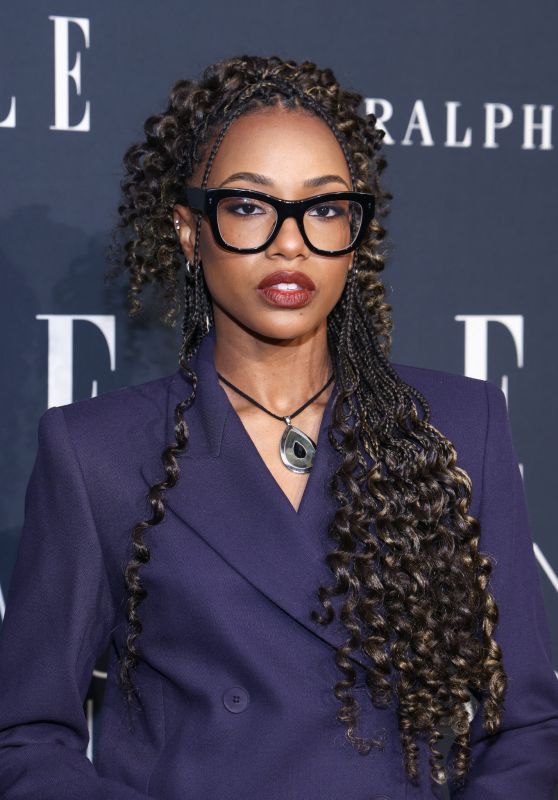[Editor’s Note: The following review contains spoilers for “The Penguin” Episode 8.]
In an early discussion of how the HBO series “The Penguin” would serve as a bridge between “The Batman” and the movie that sequel director Matt Reeves was in the process of writing, Reeves showed showrunner Lauren LeFranc a scene between Oswald “Oz” Cobb, aka the Penguin (Colin Farrell) and Selina, aka Catwoman (Zoë Kravitz) that he was going to cut from “The Batman.”
In the scene, Selina, on a mission for Batman (Robert Pattinson), goes to 44 Below, a notorious club owned by mob boss Carmine Falcone (John Turturro), where she waitresses, except this time she wants to work the underground VIP level to gather intel — Batman is following her actions through a specially-equipped pair of contact lenses. Selina’s mission is temporarily stopped by Oz, the mid-level gangster, who shows concern for her well-being.


Oz: “Downstairs? Nah, nah you don’t want to do that.”
Selena: “I need the money”
Oz: “Baby, it’s a bunch of jackals down there. They’ll bull over you.”
While on the Filmmaker Toolkit podcast, Reeves talked about how that scene served as the starting point for what would be explored in “The Penguin,” and in particular, how it led to the devastating last scene in Episode 8, which sets up Farrell’s character for his soon-to-be-shot sequel.
“Oz is revealing himself in a way that’s much more vulnerable than he ever would with Batman,” said Reeves of the deleted scene. “But you start to understand he has a soft spot for Selina, and in fact, he seems to have a bit of a crush on Selina. He knows that these guys are going to be all over her down there. He doesn’t like that.”
Oz pulls out his wallet and asks how much money Selina needs. He prefers to pay her than have her go below. Selina refuses his money, cutting him off in a matter-of-fact fashion, triggering an almost violent shift in Oz’s demeanor.
“In that moment, you see everything; Colin did this great thing; it just turned so dark, and he’s like, ‘Not good enough for you, eh? I know you don’t see it because nobody does, but one day this city’s going to be mine,’” said Reeves, recalling the deleted scene. “And he’s saying it right to Selina, but Batman is the one who sees it because we’re seeing it through the contact lenses and [Batman thinks], ‘Oh, I didn’t realize that this guy is that guy.’”
The deleted scene is an early reveal, a warning sign, of the Scarface-like ambition of Oz, but also hints at an emotional scar that will fuel his ambition to become a formidable crime boss Batman will contend with in “The Batman” sequel.
“So the whole idea was to get to this place,” said Reeves. “He would never get someone like Selina to really love him. He knows that everything is going to have to come by paying in some way because he feels that he’s not enough. Everything’s transactional. Where did those wounds come from?”
That was LeFranc’s mission, to not only deliver the story of Oz’s rise, but explore the origin of the psychological wounds that make him so dangerous.
“When Lauren came in, I showed her that scene. We talked about where all of this toxic masculinity comes from,” said Reeves. “Some vulnerability, some weakness so deep within that they are overcompensating for, that they are so protective of the wounds within them that they can become terrifying. Then it was for Lauren to go off and figure out, and she came up with the story about Francis (Deirdre O’Connell)”
 Deirdre O’Connell as Francis in ‘The Penguin’ Episode 8Max
Deirdre O’Connell as Francis in ‘The Penguin’ Episode 8MaxLeFranc constructed a devastating backstory, which was revealed in Episode 7: As a child, Oz’s actions would lead to the death of his older and younger brothers, leaving his mother, Francis, in a state of deep grief. In the comic books, in particular “Pain and Prejudice,” the hobbled Penguin is bullied as a child, including by his brothers. But LeFranc was determined not to justify and explain Oz’s behavior with bullying. In Episode 7, he locks his two brothers in the storm drain because of an insatiable need to get his mother’s undivided attention.
“In the comics, he is mistreated so deeply, in such a way that it then merits what he chooses to do as an adult, and I really wanted to shy away from those tropes,” said LeFranc. “I was very firm on making sure that we don’t make an excuse for him.”
In Episode 7, LeFranc portrays the older brother Jack (Owen Asztalos) as a leader, a good kid that’s about to join the ROTC, and who Francis views as her ticket out of the Eastside, the not-so-great neighborhood where she’s struggled to raise three boys on her own. Benny (Nico Tirozzi), the younger brother, is innocent and sweet. And Francis, before her boys are killed, is no Livia Soprano (Nancy Marchand), a future violent gangster’s mother with a personality disorder.
“Episode 7, in a way, is not just Oz’s origin story, but Francis’s as well, because you see she’s a loving mom. She’s a single mom. She’s got three boys. She has her hands full. She’s overworked. She’s doing the best she can. She always has a brash tone because that’s who she is, but there’s a lot of love and affection there,” said LeFranc. “And then what we start to realize through that episode and into the finale is that she changed too. As a result of Oz’s actions, something changed in her and there was something that she lost in herself by what Oz did.”
While Episode 7 was from Oz’s POV, LeFranc said she made a choice early on that the finale, Episode 8, would be from Francis’ perspective, through which both the audience and present-day Oz learn that not only did Francis know the truth — that he killed his brothers in cold blood — but that she was going to have Oz, her one surviving son killed in response, telling gangster Rex Calabrese (Louis Cancelmi) “I have a monster living in my house.” What saves the young unsuspecting Oz (Ryder Allen) is his promise to his depressed and grieving mother (once he finally gets her out of the house and to the jazz club Monroe’s) to let him prove to her “every damn day” that he will give her the life she deserves.
 Francis (Deirdre O’Connell) and Oz (Ryder Allen) at Monroe’s in Episode 8 of ‘The Penguin’
Francis (Deirdre O’Connell) and Oz (Ryder Allen) at Monroe’s in Episode 8 of ‘The Penguin’Young Oz: “No one else believes in you like me. No one else is gonna give you what you deserve. I’m gonna get you out of the Eastside, Ma. Put you up somewhere real nice. Better than where we are now.”
Francis: “Yeah, better’s easy than what we are.”
Young Oz: “The best then. On the top floor, in a penthouse, like you want, with a view of the whole friggin’ city.”
LeFranc told IndieWire, the structure of the series, and the way she unraveled the buried secrets of this intense mother-son relationship over eight episodes is designed so that by Episode 8 you understand just how unfillable the emotional hole is that fuels Oz.
“The fact that we are a bridge between the first film and the second film, to me, this always was a character study of Oz primarily,” said LeFranc. “And I wanted to launch Oz into a place by the end of these eight episodes where you feel like you suddenly more deeply know him. Francis informs so deeply what he wants, which is his love and affection and his mother to be proud of him. Of course he wants power, but that’s really what power means to him. I thought about his greatest fear, and it made a lot of sense to me that his greatest fear would be that love is transactional. That if he does not achieve a level of power and give Francis certain types of things that he’s promised her she might not love him. And that informs every relationship he has on the show.”
Oz finally achieves success, including the penthouse overlooking the city, at the moment Francis descends into a coma, becoming “the vegetable” she made Oz promise not to let her become. Instead, he has her propped up in a hospital bed pointed toward a penthouse view of the city below. The tragic last scene of Oz with his sex worker girlfriend Eve (Carmen Ejogo), who he pays to dress up and wear a wig to look like Francis that night at Monroe’s decades ago, is the tragic end note Reeves responded to in how LeFranc would leave the character for his movie sequel.
 Eve (Carmen Ejogo) and Oz (Colin Farrell) dance at the end of ‘The Penguin’ Episode 8Max
Eve (Carmen Ejogo) and Oz (Colin Farrell) dance at the end of ‘The Penguin’ Episode 8Max“One of the very early things that Lauren pitched was that ending with Eve where she looks like Francis,” said Reeves. “He can’t get what he needed from his mother because she’s no longer in that state because of the dark events and what he’s done, so he recreates it in this other way with Eve, and it’s very disturbing,” said Reeves. “That was something we thought was a great idea and was so emblematic of this guy’s internal state. It’s like even as he now seems to have gotten that first major step toward being the kingpin, you know that some part of him will never be filled. These are the moments why we’re doing the show. We’re getting him to where by the end of that he’s in a different place so that when you meet him in the next movie he’s been transformed by the events that you’ve seen in watching this show.”
You can subscribe to the Toolkit podcast on Apple, Spotify, or your favorite podcast platform.

![Fleur East Rocks Hits Radio Live Manchester 2024 [11-23-2024]](https://celebmafia.com/wp-content/uploads/2024/11/fleur-east-rocks-hits-radio-live-manchester-2024-11-23-2024-3_thumbnail.jpg)
![Maria Becerra Presents XTI Collection [11-21-2024]](https://celebmafia.com/wp-content/uploads/2024/11/maria-becerra-presents-xti-collection-11-21-2024-8_thumbnail.jpg)

![Kim Kardashian & Niecy Nash Film First Scenes for “All’s Fair” [11-22-2024]](https://celebmafia.com/wp-content/uploads/2024/11/kim-kardashian-niecy-nash-film-first-scenes-for-all-s-fair-11-22-2024-15_thumbnail.jpg)
![Kate Mara Spotted in Leather Motorcycle Jacket [11-23-2024]](https://celebmafia.com/wp-content/uploads/2024/11/kate-mara-spotted-in-leather-motorcycle-jacket-11-23-2024-5_thumbnail.jpg)
![Nikki & Brie Garcia Enjoy Lunch in Napa Valley [11-23-2024]](https://celebmafia.com/wp-content/uploads/2024/11/nikki-brie-garcia-enjoy-lunch-in-napa-valley-11-23-2024-9_thumbnail.jpg)
![Jaimie Alexander and Jorge Mora Spotted in New York [11-23-2024]](https://celebmafia.com/wp-content/uploads/2024/11/jaimie-alexander-and-jorge-mora-spotted-in-new-york-11-23-2024-3_thumbnail.jpg)
![Rachel Zoe Spotted in Signature Boho Chic Style [11-24-2024]](https://celebmafia.com/wp-content/uploads/2024/11/rachel-zoe-spotted-in-signature-boho-chic-style-11-24-2024-6_thumbnail.jpg)
![Mary J. Blige Brings Soulful Style to Sara Moonves’ Glamorous Birthday Bash in NYC [11-23-2024]](https://celebmafia.com/wp-content/uploads/2024/11/mary-j.-blige-brings-soulful-style-to-sara-moonves-glamorous-birthday-bash-in-nyc-11-23-2024-3_thumbnail.jpg)
![Dita Von Teese and Adam Rajcevich Savor Romantic Dinner in Los Feliz [11-24-2024]](https://celebmafia.com/wp-content/uploads/2024/11/dita-von-teese-and-adam-rajcevich-savor-romantic-dinner-in-los-feliz-11-24-2024-6_thumbnail.jpg)
![Nicole Scherzinger Gives Love to Fans after ‘Sunset Boulevard’ Broadway Performance in NYC [11-24-2024]](https://celebmafia.com/wp-content/uploads/2024/11/nicole-scherzinger-gives-love-to-fans-after-sunset-boulevard-broadway-performance-in-nyc-11-24-2024-2_thumbnail.jpg)







 English (US) ·
English (US) ·